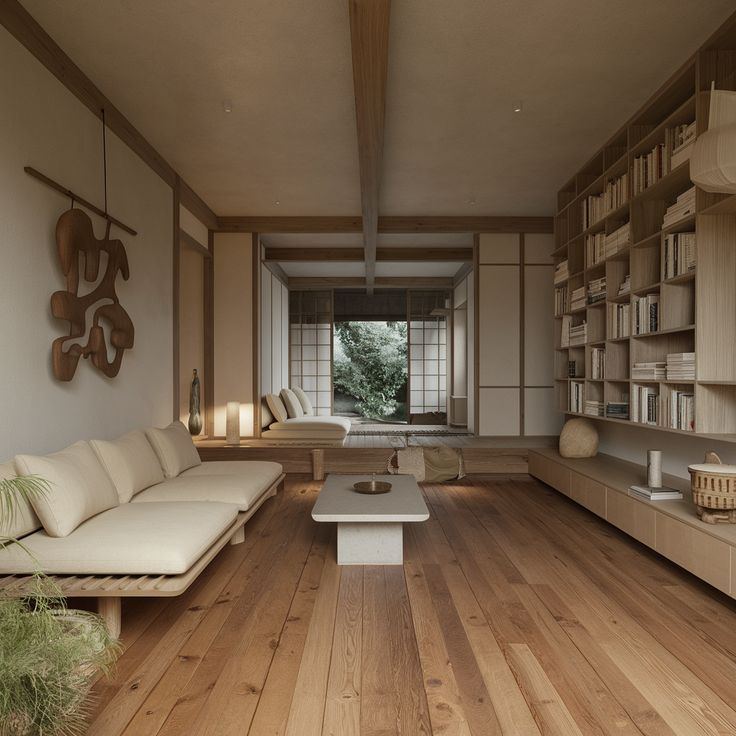If you’re looking to create a serene, stylish, and functional living room, embracing minimalism is the perfect solution. A minimalist living room can feel spacious, organized, and calming. In this step-by-step guide, we’ll show you how to transform your living room into a minimalist haven, focusing on key design principles and practical tips.
1. Declutter Your Space
The first step in creating a minimalist living room is to declutter. Start by removing items that don’t serve a functional or aesthetic purpose. Consider donating or selling items that you no longer use or need. The goal is to keep only what’s essential and what brings you joy.
2. Opt for Neutral Colors
Minimalism often involves a neutral color palette. Shades of white, gray, beige, and soft pastels are common in minimalist spaces. These colors create a clean, calm atmosphere and provide a neutral backdrop for furniture and decor. If you prefer a bit of color, choose one accent color and incorporate it sparingly.
3. Choose Simple, Functional Furniture
Minimalist furniture tends to feature clean lines, simple shapes, and neutral tones. When selecting furniture, prioritize pieces that are both functional and aesthetically pleasing. For example, a sleek sofa with straight lines, a minimal coffee table, and storage solutions that double as decor will maintain the clean, clutter-free look.
4. Focus on Open Space
In a minimalist living room, space is just as important as the items you fill it with. Keep the room open and airy by positioning furniture in a way that allows for easy movement and creates a sense of flow. Avoid overcrowding the room with furniture or accessories, as too many items can make the space feel cramped.
5. Limit Decorative Accessories
Minimalism is about simplicity, so only incorporate a few carefully selected accessories that add character to the space. A single statement artwork, a few plants, or a minimalist light fixture are all excellent options. Be mindful not to over-accessorize, as this can detract from the overall minimalist aesthetic.
6. Use Multi-Functional Furniture
To maximize the functionality of your minimalist living room, choose furniture that serves more than one purpose. For example, an ottoman that doubles as a coffee table or a sofa bed for guests can help reduce the need for extra furniture and keep the space neat and organized.
7. Keep Technology to a Minimum
One of the key elements of a minimalist living room is reducing the visual clutter that comes from technology. Choose sleek, modern electronics that blend into the background. Keep wires and cords hidden, and consider wall-mounting your television to free up space. By minimizing technology, the room feels more peaceful and less chaotic.
8. Incorporate Natural Elements
Minimalism doesn’t have to mean boring or lifeless. Introduce natural elements like wood, stone, or plants to add warmth and texture to the space. A few potted plants or a wooden coffee table can help soften the clean lines of minimalist furniture and add an organic touch to the room.
9. Embrace Natural Light
Natural light is an essential component of minimalist design. Keep your windows unobstructed by heavy drapes or blinds, and opt for light, airy curtains that allow natural light to flow into the room. If privacy is a concern, consider sheer curtains or blinds that let in light while still offering some privacy.
10. Choose Quality over Quantity
In a minimalist space, it’s better to have fewer, higher-quality items than a lot of inexpensive or unnecessary pieces. Invest in a few key furniture pieces that are well-made, durable, and timeless. Quality items will not only look better but will also stand the test of time, making your minimalist living room a long-lasting, beautiful space.
Tips for Maintaining Your Minimalist Living Room
- Stay Organized: Regularly declutter and organize your space to maintain a minimalist look.
- Keep Surfaces Clear: Resist the temptation to place items on every surface. Keep tables, shelves, and counters as clear as possible.
- Don’t Overfill the Room: Less is more. Stick to the essentials and leave room for breathing space.
FAQs for Creating a Minimalist Living Room
- What colors are best for a minimalist living room?
- Neutral colors such as white, beige, gray, and soft pastels work best for minimalist living rooms. These colors create a calm, clean atmosphere and provide a timeless backdrop for your decor.
- How do I decorate a minimalist living room?
- Decorate with only a few select items. Consider adding a statement piece of art, a few plants, or a decorative throw, but avoid cluttering the space with excessive decor.
- Can I have a minimalist living room if I have kids?
- Yes! You can still create a minimalist living room with children by opting for durable, multifunctional furniture, keeping toys organized, and choosing storage solutions that blend seamlessly with the room’s design.
